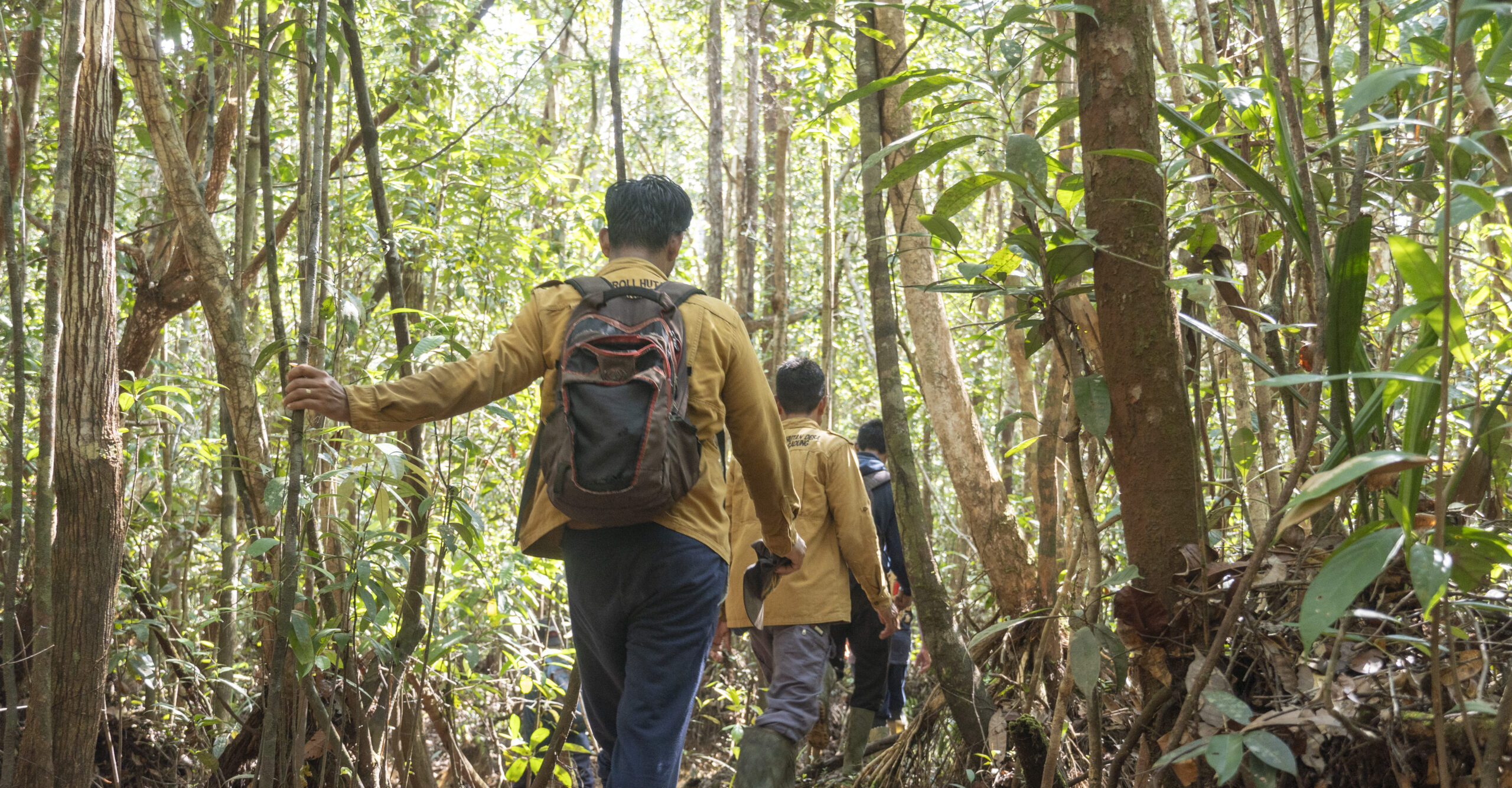- Users In Action
In India and Indonesia, Civil Society Groups Help Manage Critical Watersheds

 ECOTON worked with Brantas communities to protect the watershed.
ECOTON worked with Brantas communities to protect the watershed.Natural infrastructure such as forests and wetlands help ensure clean water to the communities that surround them. However, the very people who depend on these landscapes for water are sometimes shut out of decisions about how to manage them. Local communities may lack access to the information and technical expertise needed to participate in management decisions—and sometimes, they simply aren’t offered a seat at the table. In these cases, civil society groups, composed of citizens and non-governmental actors, can build capacity with local communities, identify institutional and policy challenges on the ground, and share local lessons with national and even international audiences. Even small investments in civil society groups can pay big dividends, as projects in India and Indonesia demonstrate. Global Forest Watch (GFW) Water is a global mapping tool and database that shows how threats to natural infrastructure affect water security throughout the world. the GFW Water initiative provided small grants to five local civil society groups in India and Indonesia. These groups used GFW Water to support their understanding of local watersheds and enrich on-the-ground work protecting forested areas. Here are two of their stories.
Restoring a Wildlife Sanctuary
The Mayureshwar Wildlife Sanctuary (MWLS) is a small but popular recreation area within easy reach of Pune and Mumbai in Maharashtra, a state in western India. The sanctuary is home to Indian gazelles (locally known as the chinkara), Indian grey wolves, hyenas and Bengal foxes, as well as a variety of insects, birds and reptiles. Since the MWLS is not fenced, its lands are subject to roaming and grazing from the nearly 250,000 sheep and goats that live in the surrounding villages. Overgrazing has eroded the sanctuary’s ground cover and made its soil so poor that trees can no longer grow.
 Grazing threatens the Mayureshwar Wildlife Sanctuary.
Grazing threatens the Mayureshwar Wildlife Sanctuary.The Ecological Society, Pune-India investigated the threats to biodiversity and water availability in the sanctuary. The team used a combination of tools to analyze the state of the sanctuary, including GFW Water. They found that the degradation was jeopardizing groundwater supplies; without grass cover, the ground failed to retain rainwater, leading to the depletion of the local aquifer. This threatens both the sanctuary’s ecosystem and the ability of surrounding villages to extract water from wells. To restore the area, the team recommended solutions such as setting aside specific areas for villagers to harvest grass while preserving crucial plant populations alongside streams. These solutions will preserve the MWLS’s animal habitats, water supply, and beauty—so that tourists and locals alike can continue to enjoy this sanctuary for years to come. In this case, civil society proved necessary to completing this technical assessment. Once the situation was assessed, they wrote a floral diversity improvement plan to remedy the degradation, and will submit it the Maharashtra State Forest Department and advocate for the plan’s analysis to influence the MWLS’s broader forest and land management policy. The hope is that report’s recommendations can also be applied in other important forests and natural areas, multiplying the report’s impact.
Including the Community to Research a Common Resource
The flood management initiatives used to protect the Brantas watershed in Java, Indonesia are considered a role model for watershed protection. However, degradation and erosion are still major problems for the area, affecting its ability to hold water and threatening native fish populations. Because government information about the river is not regularly updated or made publicly available, local community members are not well-informed about the impact on the river from deforestation, leaving them unable to fully participate in the formation of policies that shape their surroundings. Enter ECOTON, a civil society group working in the area that believes that open access to information and encouraging participation will improve the ability of local communities to advocate for their needs. With support from their GFW Water grant, they used GFW Water to analyze the risks to the river basin. GFW Water can be used to measure and map erosion, as well as other factors affecting a river basin such as tree cover loss and water stress.
 Students identify plant and animal species with ECOTON in the Brantas watershed.
Students identify plant and animal species with ECOTON in the Brantas watershed.ECOTON involved the local community in their research by actively working with schools, university students, and other community members to help test the river’s water quality and identify the plant and animal species that inhabit the watershed. They also facilitated public meetings for community members and government officials, where they shared resources including the GFW Water tool to educate people about their surrounding environment and the impacts of deforestation. This project gained the attention of the local news, and inspired government institutions to agree to allocate more resources towards improving riverbank rehabilitation programs.
A Pathway to Better Decision-Making
Forests and watersheds must be monitored and protected to ensure that communities have clean and plentiful water. While deciding how best to manage these landscapes, local communities and civil society groups must have a seat at the table. Small grants and new tools such as GFW Water can help them visualize critical watershed information and threats. Armed with that information, they can participate in larger policy dialogues to scale up restoration, conservation and sustainable land management. WRI is committed to helping even more civil society groups—such as the two highlighted here—use our tools and get access to the information they need to engage in and impact policy conversations.


